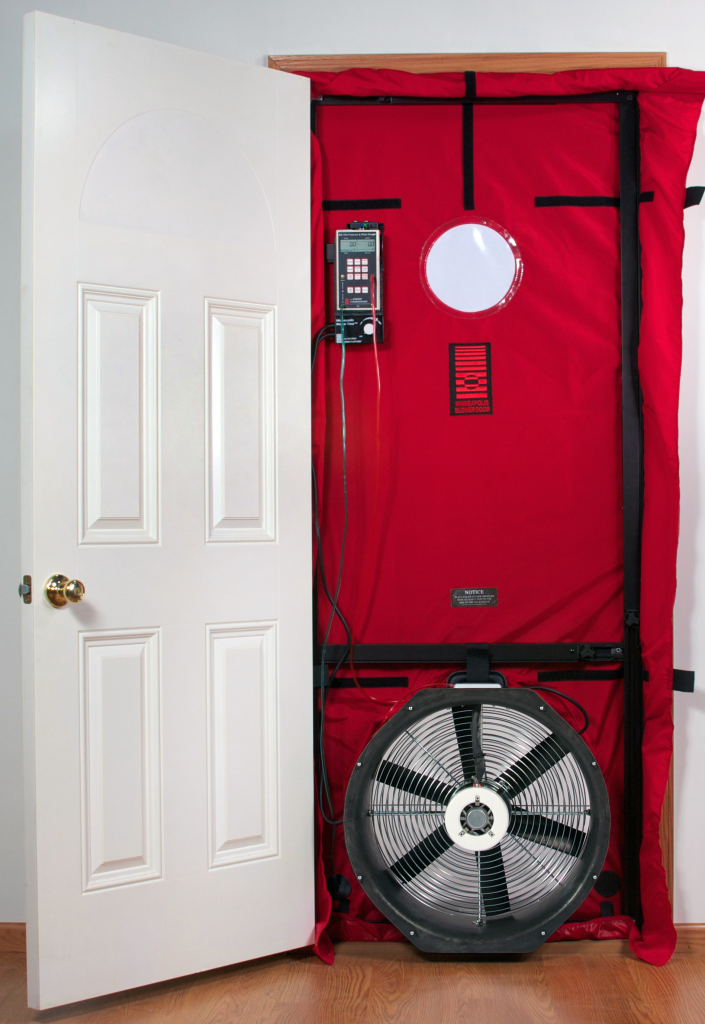Blower Door Testing
Our Scientific Approach
We use a blower door in our energy audits to determine the home’s air- tightness using a scientific approach. A blower door is a tool made specifically for the industry and is mounted in an exterior door opening. It incorporates a large, high-velocity fan that when operational expels air from inside the house to the outside. We then use a pressure gauge to instantly measure the difference in interior and exterior pressure. This is done with all windows and doors closed, which causes the interior of the home to have a lower pressure. The higher pressure of the outside air then comes in the home in all the cracks and openings. We use smoke pencils and infrared scanning to then help determine the major contributors.
tightness using a scientific approach. A blower door is a tool made specifically for the industry and is mounted in an exterior door opening. It incorporates a large, high-velocity fan that when operational expels air from inside the house to the outside. We then use a pressure gauge to instantly measure the difference in interior and exterior pressure. This is done with all windows and doors closed, which causes the interior of the home to have a lower pressure. The higher pressure of the outside air then comes in the home in all the cracks and openings. We use smoke pencils and infrared scanning to then help determine the major contributors.
Our focus for using blower doors are:
- Identify energy loss from air leakage and devise a plan to eliminate or reduce it
- Identify moisture intrusion areas and devise a plan to eliminate or reduce it
- Identify unwanted drafts that make living uncomfortable in cold weather
- Evaluate insulation effectiveness in wall cavities and hard to reach areas.
- Evaluate mechanical ventilation and identify back drafting problems.
- Evaluate Mechanical venting and provide up-to-date improvements.
How to Prepare for your Blower Door Test
We ask that you take these following steps to prepare yourself and your home for our blower door test:
- If you use wood to heat your home, or as a secondary heat source, be sure all fires are out and cold coals and ashes and properly dispose of.
- Our walk-through can take anywhere from 2-4 hours depending on the size of your home. Please allow sufficient time to indicate areas of concern or notable problems you have experienced. After all, no one knows your home better than you.
- Please allow access to all areas of the home including attic, closets, basement, closed off rooms, crawl spaces, and attached garages. If you have multiple attic access points please make sure we can get into all of them.
- When we do a blower test we close all exterior doors and windows, open all interior doors, and close all fireplace dampers, doors, and woodstove air inlets. We usually use the front door for the blower door, so access during the test will need to be through garage door or other outside entrance.
- We will need access to controls for water heater, thermostat, and other appliances to make sure they do not turn on during our test. We will set the controls back after our test.